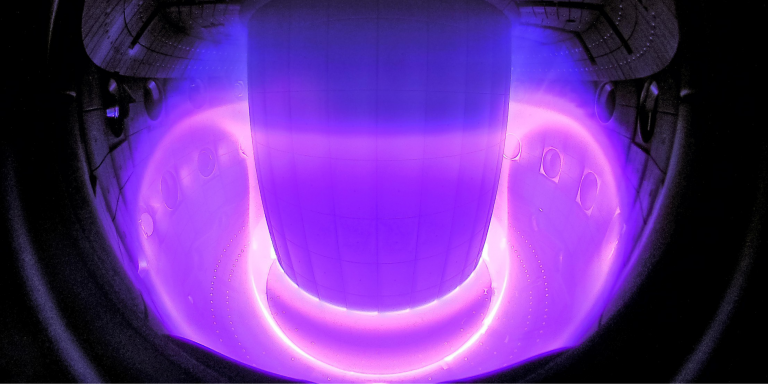
Nuclear fusion, with its potential to provide clean, renewable electricity, is at the heart of work by researchers around the world. A team of scientists from the Swiss Plasma Center at EPFL (Ecole Polytechnique Fédérale de Lausanne) and DeepMind has developed a new method for controlling plasma configurations for use in nuclear fusion research. The results of their study “Magnetic control of tokamak plasmas by deep reinforcement learning” have just been published in the journal Nature.
Nuclear fusion is a natural phenomenon: the sun transforms astronomical quantities of hydrogen into helium, thus producing a large amount of energy. Researchers are working to reproduce this phenomenon and demonstrate that the fusion of hydrogen atoms is possible. China and the United States seem to have made serious technological progress in this field and in France, the international ITER project is also advancing rapidly.
The Swiss Plasma Center is one of the world’s leading fusion research laboratories. It conducts a range of research and development work in the field of plasma physics. Within the framework of its international collaborations, it has participated in the preparation of the ITER scientific program and in the construction of ITER. DeepMind, an AI company acquired by Google in 2014, has conducted research on reinforcement learning (RL) algorithms. In 2020, it announced that it had developed a next-generation RL solution that interacts with environments, which it called Learned Policy Gradient (LPG).
In 2018, SPC and DeepMind pooled their expertise to develop a new method for controlling plasma configurations for use in nuclear fusion research. Federico Felici, a scientist at SPC and co-author of the study, met the DeepMind team at a hackathon at the company’s London headquarters and then told them about the tokamak magnetic control problem he and his collaborators were encountering. He explains:
“DeepMind was immediately interested in the prospect of testing its AI technology in an area such as nuclear fusion, especially on a real system like a tokamak.”
The SCP tokamak
To design and develop magnetically confined fusion power reactors, researchers must understand the turbulent motion of plasmas: a mixture of ions and electrons swirling in reactor vessels. The plasma particles, following magnetic field lines in toroidal chambers called tokamaks, must be confined long enough and at very high temperatures (hundreds of millions of degrees Celsius) for fusion devices to produce significant gains in net energy. This energy could produce electricity.
The SPC is one of the few research centers in the world with a working tokamak. This tokamak is unique because, with its capacity to shape the plasma, it can develop new configurations, hence its name: variable configuration tokamak (VCT). In a tokamak, it is the magnetic coils (19 for the TCV) that form and maintain the plasmas. Their adjustments, particularly the voltage, require numerous controls to prevent the plasma from colliding with the walls of the chamber and damaging it. Thus, SPC researchers first test their control systems on a simulator before using them in the TCV tokamak. Federico Felici, a scientist at SPC and co-author of the study, states:
“Our simulator is the result of more than 20 years of research and is constantly being improved. Despite this, tedious calculations are still required to determine the correct value of each variable in the control system. This is where our joint research project with DeepMind comes in.”
The study
The study focuses on the effects of shaping the plasma distribution in different configurations to optimize stability, confinement and energy depletion, and, in particular, to inform the first plasma burning experiment, ITER.
DeepMind scientists developed an RL algorithm capable of creating and maintaining specific plasma configurations, and trained it on the SPC simulator. The algorithm generated a control strategy to produce the requested plasma configuration and enabled testing of new plasma shapes, including “droplets” that it successfully stabilized simultaneously in the chamber during the 200 millisecond test. This latest test represents a significant advance for feedback control of the tokamak and demonstrates the potential of reinforcement learning to accelerate research in fusion, which is one of the most challenging real-world systems where reinforcement learning has been applied.
For EPFL, this project should pave the way for further joint R&D opportunities with external companies. Ambrogio Fasoli, SPC Director and co-author of the study, concludes:
“We are always open to innovative win-win collaborations where we can share ideas and explore new perspectives, thus accelerating the pace of technology development.”
The study can be accessed here: journal Nature.
Translated from Fusion nucléaire : DeepMind et le Swiss Plasma Center contrôlent le plasma grâce à l’IA









